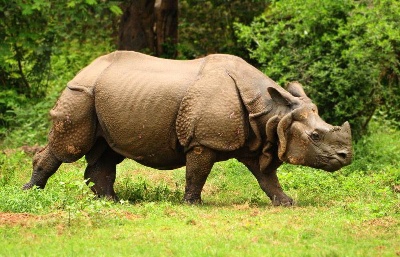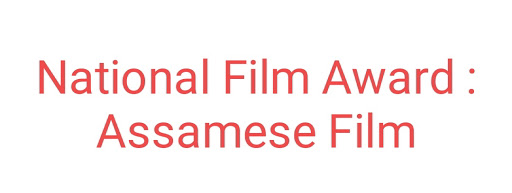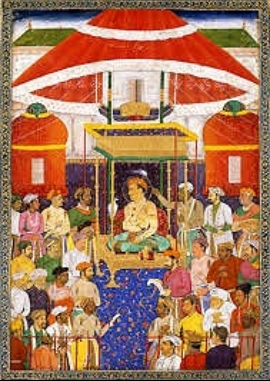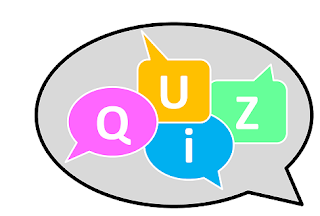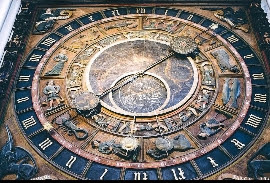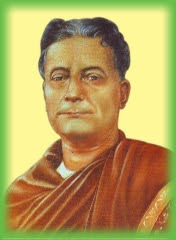Thursday, August 06, 2020
Monday, August 03, 2020
SAARC
SAARC -South Asian Association for Regional
Cooperation.
Established 8 December 1985 in Dhaka, Bangladesh.
There are eight members states, such as ―Afghanistan,
Bangladesh, Bhutan, India, Maldives, Nepal, Pakistan, and Sri Lanka.
Along with Six
observers states —China, Japan, European Union, Republic of Korea, United
States, Iran.
It is the regional and geopolitical intergovernmental organization between the members states in South Asia.
Cooperation between the member's states including :
: Travel & Tourism
: The agriculture sector and rural infrastructure
Development.
: Environment and Natural Disasters cooperation.
: Trade and Finance, Economic support and help.
: Education, social and cultural affairs.
: Energy, Transport, Science and Technology sector.
SAARC Specialized Bodies
SAARC Development Fund (SDF): SDF is governed by
Ministry of Finance of the Member States. Its primary objective is funding in
social development such as poverty alleviation, development, etc.
South Asian University (SAU) is an international
university, located in India. Degrees and Certificates awarded by the SAU are
at par with the respective Degrees and Certificates awarded by the National
Universities/ Institutions.
South Asian Regional Standards Organization (SARSO)
Located at Dhaka, Bangladesh.
Its Primary objectives is coordination and
cooperation among SAARC member states.
BRICs
Brics-Recent summit: 11th BRICS summit was held on 13–14 November 2019, Brazil.
12th summit: 21-23 July 2020 (postponed due to
COVID-19 pandemic)Host by: Russia.
13th summit: India.
BRICS is the association of five major countries,
such as: Brazil, Russia, India, China and South Africa. First BRICS Ministerial The meeting was held in New York(UN General Assembly Session) on 20 September
2006. Moreover, they all are members of G20.
Previous Article: click here
Saturday, August 01, 2020
Thursday, July 30, 2020
Wednesday, July 29, 2020
Tuesday, July 28, 2020
Sunday, July 26, 2020
Saturday, July 25, 2020
| Background (Part-01) |
|---|
| 350-374 C.E Varman dynasty was established in Kamarupa by Pushyavarman He Encouraged the extension of Vedic culture and religious activities. |
| 636 C.E Xuanzang visits Kamrup during the tenure of Bhaskarvarman(602 to 664 Chinese Buddhist monk, scholar, traveller, and translator |
| 650 C.E Bhaskarvarman died. End of Varman dynasty |
| 655 C.E Salasthamba establishes Mlechchha dynasty in Kamarupa. Bhaskaravarman was the first Kamarupa king to claim descent from the mythical Narakasura,Bhagadatta and Vajradatta.After his death Salasthambha, who established the Mlechchha dynasty. |
| 900 C.E Brahmapala establishes Pala dynasty in Kamarupa Before the coming of the Ahom (1228 A.D.), the country was known as Kamrupa with its capital at Pragjyotishpur (Modem Guwahati). The word ‘Kamrupa’ means the land where ‘kama’ (love) regained his ‘rupa’ (form). The ancient ‘Kamrupa’ kingdom, which spread from Kartoya River (in West Bengal and Bangladesh) on the west to the Dikhow River on the east. Assam is the modem name. Which under the Ahom rule came to be called as ‘Asama’ means unequalled /‘peerless’ or ‘uneven'. As ‘Asama’, ‘Peerless’, means 'to be defeated, with the Assamese Prefix 'A', Assam means Undefeated.( According to Dr Banikanta Kakati). |
| 1100 C.E Jayapala, last king of Pala dynasty was removed by Ramapala |
| 1187 Birpal establishes Chutiya kingdom at Swarnagiri |
| Timeline of Assam history: Ancient Assam |
| 1)Important sources of ancient Assam: such as Purana, Vedic Period Bhrahmanical works, rock inscriptions, Inscriptions or Epigraph, travellers notes etc. |
| 2) The Brahmanical works (Vedic period) are important evidence of Aryans and the Non-Aryans implications of India (eastern India).Satapatha Brahmana: Aryan culture up to the river Sadanira and river Karotoya (permanent western boundary of ancient Assam).The Aiteraya Brahmana records the culture of Kamarupa. Gopatha Brahmana-origin of the name Kamarupa as early assimilation of Aryan and Non-Aryan elements. |
| 3) Sankhyayana Grihasamgraha refers to Kamarupa as the land of sunrise. On the other hand, Puranas are the most important evidence of ancient Assam. Most of them, such as Garuda, Markandeya, Naradiya, Brahmana, Skanda, Agni and Vishnu indicate to ancient Assam. |
| 4) Kamarupa and Kamakhya as great centres of pilgrimage.Markandeya Purana: Pragjyotisha along with Udayachala, Lauhitya and Kamarupa as countries in the east. |
| 5) Vishnu Purana: Varaha (boar) incarnation of Lord Vishnu, the killing of Naraka and the enthronement. |
| 6) Bhagadatta and Naraka legend is noticed in the Kalika Purana (composed:10th or 11th century A.D).Kalika Purana: traditional boundaries of Pragjyotisha, Kamarupa as well as the Goddess Kamakhya in the religious life of the people of Assam. It is the invaluable documents for the political and cultural history of ancient Assam. |
| 7) Adikanda Ramayana records the foundation of the city of Pragjyotisha by Amurtaraja. |
| 8) Arthasastra of Kautilya: described many places of Kamarupa like Suvarnakundya, Paralauhitya, etc in connection with the economic products of Kamarupa. |
| 9) Raghuvamsa, Kalidasa refers to both Pragjyotisha and Kamarupa as lying to the east of the Brahmaputra. |
| 10) Harshacharita of Banabhatta provides information about the political and cultural history of the 7th century Kamarupa. |
| 11) Bilhana’s: Vikramankadevacharita refers to an invasion of Kamarupa by his patron Chalukya Vikramaditya VI (c.1076-1126). |
| 12) Sandhyakaranandi’s Ramacharita describes the conquest of Kamarupa by Mayana, the general of Ramapala (c.1085-1130) |
| 13) Kalhana’s Rajatarangini: marriage between the Kamarupa princess Amritaprabha and Meghavahana, the king of Kashmir. It also mentions Lalityaditya’s campaign as far as the Lauhitya. |
| 14) Chinese works were another important source of ancient Assam history. Chang Kien of the 2nd century B.C. mention the existence of commercial and cultural contacts between ancient Assam and China from very early times. Shung Shu (c.420- 479 A.D.) records the sending of two embassies from India to China, of which, one was sent by Yu-Chai of the Kapili valley. Yu-Chai is identified with King Kalyanavarman (c.420-440A.D.) of the Varman dynasty ruling in ancient Assam. |
| 15) Arabic and Persian works(Muslim scholars) earliest one to mention about Kamarupa was a book written by the Arab merchant Sulaiman in 851 A.D. but completed by Abu Zayd in 916 A.D. Another work was Hudud-ul-Alam composed by the unknown author in 982 A.D. Alberuni’s Arabic work entitled Tarikhul- Hind written about 1030 A.D. mentions that Kamrupa lies to the east of Kannauj. The Persian work Tabaqat-i-Nasiri of Minhajuddin Siraj gives information about Muhammad-i- Bakhtiyar’s expedition against Tibet through Kamarupa and the destruction of the major part of his army in Assam near Guwahati. |
| 16) Tezpur Rock Inscription of king Harjaravarman is the earliest known dated inscription of ancient Assam (510 of the Gupta era corresponding to 829 A.D. |
| 17) Umachal Rock Inscription, BargangaRock Inscription, Doobi Copper Plates, Nidhanpur Copper Plates and Nalanda Clay Seals provide information about the Varman dynasty. |
| 18) Salastambhas, we have the Tezpur Rock Inscription, Hayungthal Copper Plate, Tezpur Copper Plate, Parbatiya Copper Plates, Howraghat Copper Plates, Nagaon Copper Plates and Ulubari Copper Plates. |
| 19) Pala dynasty can be known from the Caratbari Copper Plates, Bargaon Copper Plates, Soalkuchi Copper Plates, Guwahati Copper Plates, Guakuchi Copper Plates, Gachtal Copper Plates, Khonamukh Copper Plates, Subhankarapataka Copper Plates and Pushpabhadra Copper Plates. |
Reference book: 1) History of Assam: Sir Edward Gait
Thursday, July 23, 2020
Wednesday, July 22, 2020
Assamese Language and Literature
|
Author |
Name |
Speciality |
|
Padma Nath Gohain Barooah |
Bhanumoti :1890 |
Fisrt Assamese Historical Novel |
|
Atmaram Sarma |
Dharma Pustak |
First Published Book in Assamese
Language (1813 |
|
Jyandaviram Baruah |
Bilatar Sithi |
Fisrt Travel Guide book (1939 |
|
Gunabhiram Baruah |
Ram Navami |
First Assamese Social Drama (1857 |
|
Bhattadev |
Katha Geeta , Katha Bhagawad ,
katha Ratnawali |
Fisrt Assamese Prose writer |
|
Dilip Kumar Dutta |
Premat Porilo Neki |
First Computerized Book in
Assamese |
|
William Robinson |
Grammar Of the Assamese Language
:1839 |
First Assamese Grammar
(language:English |
|
Debendra Nath Bezbaruah |
Asomia Sahityar Buranji : 1912 |
Assamese History related book |
|
Re.Nathan Brown |
Orunodoi :1846 |
First Assamese Newspaper |
|
Lakshminath Bezbaruah |
Assamese Short
Story:Bhadari/Patmugi |
Fisrt Assamese Short story, known
as the father of Assamese Short story |
|
Lambodar Bora |
Shakuntala |
First Sanskrit Translated Book |
|
Lakshminath Phukan |
The Assam Tribune: 1946 |
First English Newspaper of Assam |
|
Banikanta Kakoty |
First Doctorate Degree: PhD in
Assamese Literature |
|
|
Maidul Islam Bora |
First Doctorate from Assam |
|
|
Edit. Birendra Kumar Bhattacharya |
Navajog |
First Assamese Weekly journal |
|
Miles Bronson |
First Dictionary compiler |
one of the First American Baptist
Missionaries |
|
Nalini Bala Devi |
Mystical Poet (Alakananda: Sahitya
Akademi |
In 1957 Awarded Padma Shree by
Govt of India |
|
Hem Saraswati |
Prahlad Charit |
First Assamese Poetry book |
|
Hem Chandra Goswami |
Priyotomar Sithi |
first Assamese Sonnet Poem Writer |
|
Hiteswar Barbarooah |
Malas:1918 |
First Assamese Sonnet Book |
|
Harkanta Sadaraminar Atmojibani |
First as Written Autobiography |
Autobiography:1960 |
|
Lakshminath Bezbaruah |
Mor Jibanar Sowaran |
First Published Assamese Autobiography |
|
Maheswar Neog |
Antajya |
First Assamese Free Verse |
|
Sumanta Chaliha |
Adhunik Asomia Sabdakosh:1991 |
Use First Phototype Setting
Technique dictionary. |
|
Mahapurush Shankardeva |
Ram Bijaya |
Ramayan Based Drama |
|
Pulak Gogoi |
Cartoon |
Satire magazine |
|
Chandra Kumar Agarwala |
Bon Kuwaori:1889 |
First Assamese Romantik Poem |
|
Edit. Pritima Koushik Baruah |
Mahekiya Career Guide |
Career Magazine |
|
Madhav Kandali |
14th Cencuty Ramayan translator |
First in regional language
Translated works of Ramayan |
|
Lakshminath Bezbaruah |
Surabhi :1909 |
Short Story Collection |


